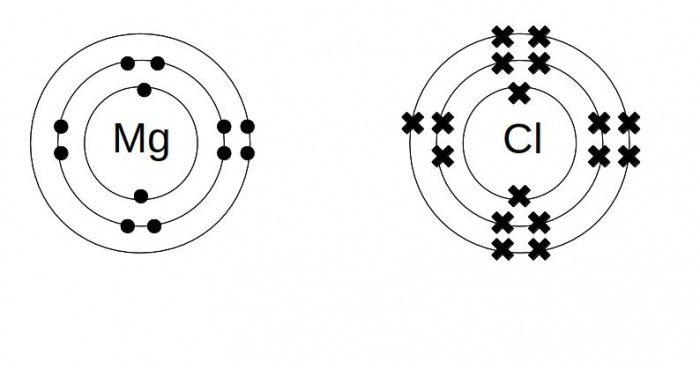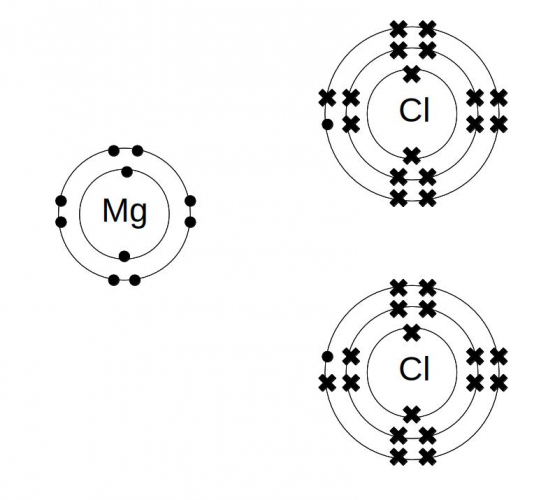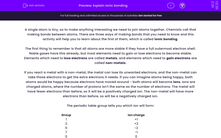A single atom is tiny, so to make anything interesting we need to join atoms together. Chemists call that making bonds between atoms. There are three ways of making bonds that you need to know and this activity will help you to learn about the first of them, which is called ionic bonding.
The first thing to remember is that all atoms are more stable if they have a full outermost electron shell. Noble gases have this already, but most elements need to gain or lose electrons to become stable. Elements which need to lose electrons are called metals, and elements which need to gain electrons are called non-metals.
If you react a metal with a non-metal, the metal can lose its unwanted electrons, and the non-metal can take those electrons to get the extra electrons it needs. If you can imagine atoms being happy, both atoms would be happy because electrons have moved around - both atoms will become ions. Ions are charged atoms, where the number of protons isn't the same as the number of electrons. The metal will have fewer electrons than before, so it will be a positively charged ion. The non-metal will have more electrons than before, so will be a negatively charged ion.
The periodic table group tells you which ion will form:
| Group | Ion charge |
| 1 | +1 |
| 2 | +2 |
| 6 | -2 |
| 7 | -1 |
| 0 | 0 |
This seems hard, but makes more sense with a real example. Sodium and chlorine react to make sodium chloride, which is the salt that people put on food. Let's start with the electron structures of the atoms before the reaction:
.jpg)
In this diagram, each dot or cross represents an electron. We can also use numbers to show the electron configuration: sodium is 2.8.1 and chlorine is 2.8.7. Sodium has one electron too many, and chlorine has one electron too few. Moving one electron from the sodium atom to the chlorine atom makes both atoms into stable ions. The sodium has +1 charge (it's lost one negatively charged electron), and the chlorine has -1 charge (it's gained one negatively charged electron). The chlorine atom gets a new name - we call it a chloride ion. The electron which moved over from the sodium to the chlorine is still drawn as a dot because that shows us where the electron came from.
.jpg)
Because the ions have opposite charges, they will be attracted to each other by electrostatic forces. That's why we talk about ionic bonding - the bond is an electrical force between different ions. Each positive ion attracts negative ions in all directions, so you get a repeating pattern which only stops when you run out of atoms.
The dot and cross diagram works a bit differently for different compounds. To see this, let's think about magnesium and chlorine reacting to make magnesium chloride.
Step 1: Draw the electron structure for the two elements you are reacting.
Magnesium has two electrons in its outermost shell, which it needs to lose. Chlorine has one empty slot in its outermost shell, which it needs to fill.

Step 2: Decide how many atoms you need of each element.
If each magnesium is losing two electrons, and each chlorine will only take one more, we need two chlorines for each magnesium.
.jpg)
Step 3: Redraw the electron structures, showing the transferred electrons.
Don't try and edit your initial diagrams - you will end up with a confusing mess.

Step 4: Put square brackets round the ions, and record their charges.
The magnesium is Mg2+ (it's lost two electrons) and each chlorine is Cl- (each chlorine gains one electron).
.jpg)
And that's it! Remember that ionic bonding happens between metals and non-metals, and works because the metal loses electrons and the non-metal gains electrons - both atoms are more stable that way.
Now it's time for some questions on this.








